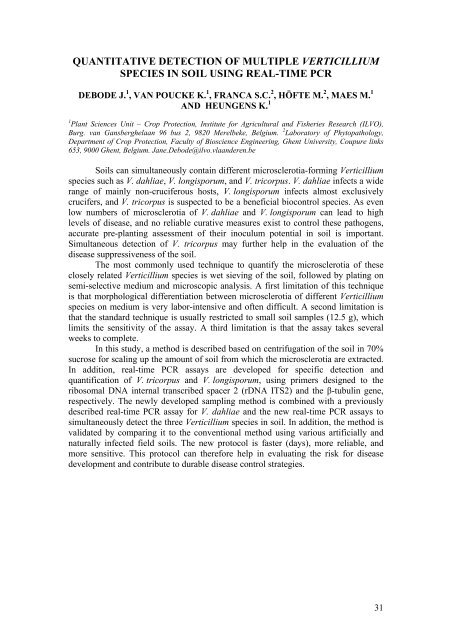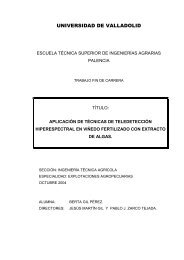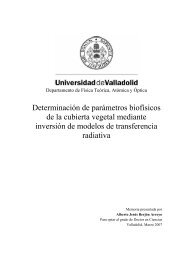10th INTERNATIONAL VERTICILLIUM SYMPOSIUM 16-20 ...
10th INTERNATIONAL VERTICILLIUM SYMPOSIUM 16-20 ...
10th INTERNATIONAL VERTICILLIUM SYMPOSIUM 16-20 ...
Create successful ePaper yourself
Turn your PDF publications into a flip-book with our unique Google optimized e-Paper software.
QUANTITATIVE DETECTION OF MULTIPLE <strong>VERTICILLIUM</strong>SPECIES IN SOIL USING REAL-TIME PCRDEBODE J. 1 , VAN POUCKE K. 1 , FRANCA S.C. 2 , HÖFTE M. 2 , MAES M. 1AND HEUNGENS K. 11 Plant Sciences Unit – Crop Protection, Institute for Agricultural and Fisheries Research (ILVO),Burg. van Gansberghelaan 96 bus 2, 98<strong>20</strong> Merelbeke, Belgium. 2 Laboratory of Phytopathology,Department of Crop Protection, Faculty of Bioscience Engineering, Ghent University, Coupure links653, 9000 Ghent, Belgium. Jane.Debode@ilvo.vlaanderen.beSoils can simultaneously contain different microsclerotia-forming Verticilliumspecies such as V. dahliae, V. longisporum, and V. tricorpus. V. dahliae infects a widerange of mainly non-cruciferous hosts, V. longisporum infects almost exclusivelycrucifers, and V. tricorpus is suspected to be a beneficial biocontrol species. As evenlow numbers of microsclerotia of V. dahliae and V. longisporum can lead to highlevels of disease, and no reliable curative measures exist to control these pathogens,accurate pre-planting assessment of their inoculum potential in soil is important.Simultaneous detection of V. tricorpus may further help in the evaluation of thedisease suppressiveness of the soil.The most commonly used technique to quantify the microsclerotia of theseclosely related Verticillium species is wet sieving of the soil, followed by plating onsemi-selective medium and microscopic analysis. A first limitation of this techniqueis that morphological differentiation between microsclerotia of different Verticilliumspecies on medium is very labor-intensive and often difficult. A second limitation isthat the standard technique is usually restricted to small soil samples (12.5 g), whichlimits the sensitivity of the assay. A third limitation is that the assay takes severalweeks to complete.In this study, a method is described based on centrifugation of the soil in 70%sucrose for scaling up the amount of soil from which the microsclerotia are extracted.In addition, real-time PCR assays are developed for specific detection andquantification of V. tricorpus and V. longisporum, using primers designed to theribosomal DNA internal transcribed spacer 2 (rDNA ITS2) and the β-tubulin gene,respectively. The newly developed sampling method is combined with a previouslydescribed real-time PCR assay for V. dahliae and the new real-time PCR assays tosimultaneously detect the three Verticillium species in soil. In addition, the method isvalidated by comparing it to the conventional method using various artificially andnaturally infected field soils. The new protocol is faster (days), more reliable, andmore sensitive. This protocol can therefore help in evaluating the risk for diseasedevelopment and contribute to durable disease control strategies.31




